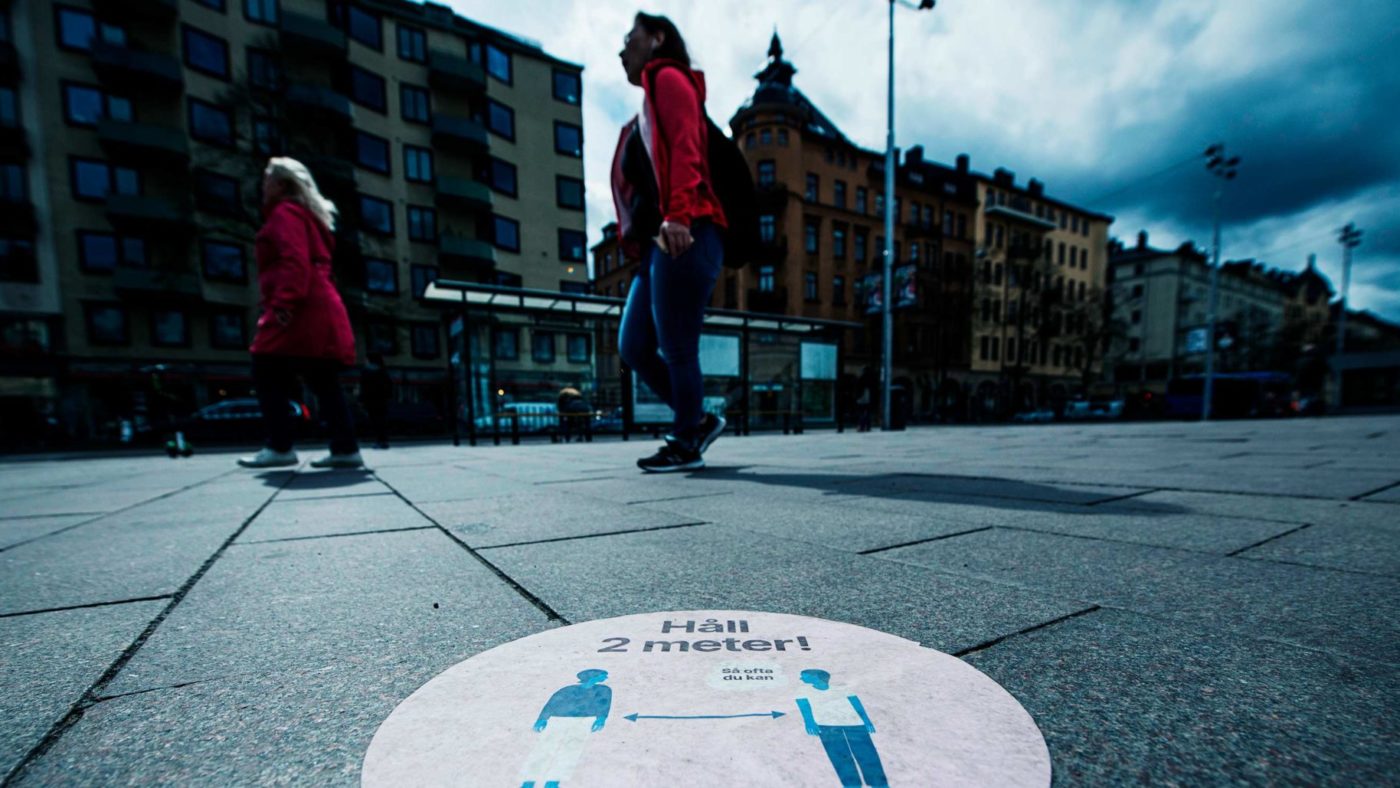This pandemic has turned the world upside-down.
The usually gregarious Italians now “no longer greet one another, passing by with lowered eyes”, according to one gloomy report. My fellow Swedes, who pathologically retreat from emotional connections and shy away from conversations with strangers, now respectfully greet their neighbours and others they meet on their strolls through the park – naturally, from a safe distance.
For many people it is like the physical boundary we usually associate with personal space grew fivefold in a couple of weeks. And nothing is like it used to be.
Sweden, whose population has unusually high confidence in their public institutions and normally doesn’t have a problem with central government mandates (after all, we happily hand over 43% of our GDP to the government – almost a third more than Brits do), has resolutely resisted most measures to restrict individual freedom. In America, the land of the free, governors have outdone each other in the severity of their shelter-in-place orders; in many states gun shops and liquor stores are the last remnants American commerce. Brits, normally quite undisturbed by the goings-on in Westminster, are both ‘rallying around the flag’ and, on occasion, displaying their commitment to freedom by resisting being locked-up.
One of the many failings of the panic-stricken media coverage so far has been pundits focusing either on the total number of dead – ignoring that America has a thousand times more inhabitants than Iceland – or the country-level per-capita death rates, overlooking that the pandemic differs widely from one part of a country to another.
When we compare Covid deaths from big cities in respect to their populations rather than the population of their country, the story that emerges is different, more nuanced and more reflective of the lives most of us live in these pandemic times.
Some of the pro-lockdown arguments have hinged on how densely populated Britain is and how many more people would have been infected and died had the government not confined Brits to their homes. The high death rate in a sparsely populated country like Sweden which, perhaps foolishly, kept its borders, schools and most everyday life open seems to support that argument.
But hang on. As of May 6, Sweden’s Covid-death toll stands at 2,941 – a per-capita count of 29 per 100,000 people; in America it’s about 22 per 100,000 people. The UK’s number, now the highest in Europe, is well above that at 39 dead per 100,000. How can we make sense of this?
To some extent we would expect Sweden, whose population density is one-tenth that of Britain, to fare better against a contagious disease that spreads by proximity. But though the countries as a whole may differ, their capital cities are altogether more comparable – Stockholm has a population density of 5,203/km2, while London’s is 5,701/km2.
Stockholm, however, accounts for a much greater proportion of Sweden’s outbreak than London, with 37% of positive tests and more than half of the country’s deaths. Similarly, New York City accounts for 30% of America’s Covid deaths – almost half if we count its metropolitan statistical area. In contrast, London only has 20% of the UK’s total number of deaths so far.
Stockholm has seen 65 people per 100,000 die from the epidemic, compared to 59 in London and a staggering 225 in New York City (162 in the greater NYC statistical area). Clearly, coronavirus deaths are much more spread out in the UK, with Scotland reporting something like 51 dead per 100,000 people, the East, the Midlands and the North West all around the national average of 39 per 100,000.
In America and Sweden, however, the pandemic has been mild or totally unremarkable in most places. The Swedish region where my family lives, Skåne, has had just six deaths per 100,000 people, lower even than locked-down Denmark or Germany. The same is true for many other parts of Sweden – particularly the very sparsely populated north.
Similarly, the US state of Wyoming, with a population 600,000, has reported just seven Covid deaths; Maine, with roughly the same population as my home region of Skåne, has seen 62 deaths – about 5 per 100,000 inhabitants. To a lesser extent this is also true in some parts of Britain: As of May 5, the South West, where 8% of the UK’s population lives, had reported fewer than 4% of its deaths.
These statistics go some way to explaining why Sweden has opted for a more open approach, as have American states with low population densities. It also explains why Americans who live in rural parts of states with stringent lockdowns are so frustrated – in their part of the world, the nature of the virus simply doesn’t justify draconian restrictions.
It there is at least one thing this crisis has unambiguously taught us, it is that one size does not fit all. New York’s outbreak is not Wyoming’s and advice appropriate for London is not necessarily right for the Peak District, let alone the Scottish borders or rural Wales. So far, the pandemic has mostly been a story of Big City life and it is not clear that that’s about to change. We should talk about London, New York City or Stockholm – not Britain, America or Sweden.
Click here to subscribe to our daily briefing – the best pieces from CapX and across the web.
CapX depends on the generosity of its readers. If you value what we do, please consider making a donation.


